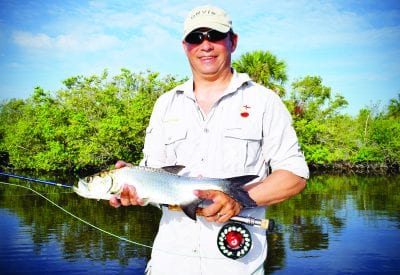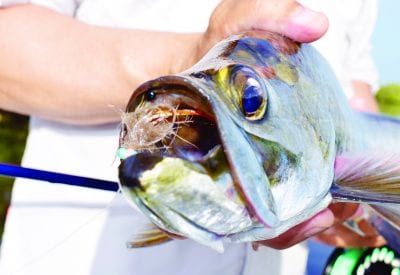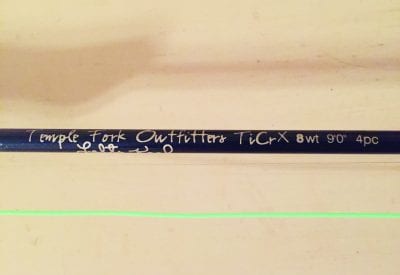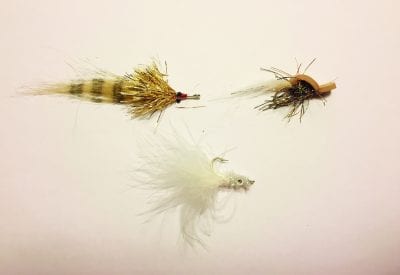Capt. Jonathan Moss
My name is Captain Jonathan Moss of Go Castaway Fishing Charters. I am a full-time Space Coast and Mosquito Lagoon Fishing Guide, and I am addicted to catching Tarpon on Fly. Tarpon are by far my favorite fish to catch! Their acrobatic skills compare only to the trapeze artists of a circus! Their will and determination combined with their incredible strength make Tarpon very difficult to successfully catch. Last month we focused on how to catch juvenile Tarpon on light tackle, and this month’s Pro Tip is all about Fly Fishing for Tarpon!
Rod and Reel: For juvenile Tarpon up to 40 pounds, a light tackle set up is the way to go. I prefer a 6 or 8 weight sealed drag fly reel paired with a 9’0, 4 piece fly rod. 6 weights are great for smaller fish, but if you come across some larger Tarpon, you may be under gunned. 8 weight fly set ups are a great all-around choice for fly fishing our East Coast lagoons. I prefer to spool my 8 weight reel with a tropical floating fly line and a 15-20lb fluorocarbon leader. If fish are being finicky, try changing to a light leader. But remember, Tarpon have a very abrasive mouth and the lighter the leader, the easier it is for the fish to wear through the line.
Flies: When targeting juvenile Tarpon, I prefer to use small shrimp or baitfish pattern flies. Schminnows, Tarpon Toads, and Gurglers are my top choices. Water depth and Tarpon behavior will play a roll in how I make my fly selection. For example, if I can visually see the tarpon laid up under mangroves or docks, or sitting on the edge of a drop off, I will pick a fly that has a lead head or bead chain eye tied on so that the fly will sink faster to the strike zone. If the Tarpon are aggressively feeding on bait at the surface, than I will tie on a Gurgler. Gurglers, when stripped, create a gurgle or popping type of noise. This triggers that incredible top water bite! As far as color choice is concerned, like our soft plastic choices, natural, white, and dark colors work best in our Space Coast waters.
Now that we are ready to go, let’s talk about landing these magnificent fish. Remember that in the summer months, our water temperatures rise, and as a result, there is less oxygen in the water. Because of this, Tarpon will “roll” where their backs, dorsal fin and tail come out of the water to take in fresh air. This rolling action is what I look for on the flats when in pursuit of Tarpon. Once located, cast out in front of the Tarpon and begin stripping your fly. In order to trigger a bite, you must put your fly in front of the Tarpon. They need to see the fly move, and it must be right in front of their face. This is why I call Tarpon “my personal favorite frustration.” You may make the perfect presentation, but be patient as they don’t always eat. Once a Tarpon eats, they will turn their heads, the line comes tight and then you must strip set to set the hook. Strip setting prematurely will only result in pulling the fly out of the feeding Tarpon’s mouth. And just the same as using a light tackle spin set up, when the hooked fish feels the tension of a set hook, they will propel themselves out of the water, shaking their head back and forth violently. This is when you will want to implement a Tarpon fishing technique called ” Bow to the King” which simply means, pointing your rod tip at the jumping fish. When you bow, or point your rod, you are allowing slack to form in the line. This is important because when a Tarpon is airborne, shaking its head, tension in the line will cause the hook to become dislodged, and you will lose your fish.That is known as jumping Tarpon. “Bowing to the king” takes some time to perfect but will greatly increase your hook-to-catch ratio. Also line management is very important to pay attention to as your fly fishing.If the tarpon surges and takes line, and your line is tangled or caught on something, it could result in a broken line.
Lastly, very important to remember and worth mentioning two months in a row:
1. Tarpon are Catch and Release only “with the exception of the harvest or possession of a single Tarpon when in pursuit of an IGFA record and in conjunction with a Tarpon tag” per FWC.
2. Tarpon may be taken out the water for photographs as long as they are no longer than 40 inches.
3. Please be sure to handle, revive and release ALL fish with respect and care.
Capt. Jonathan Moss
Go Castaway Fishing Charters
www.gocastaway.com
407-760-8593





